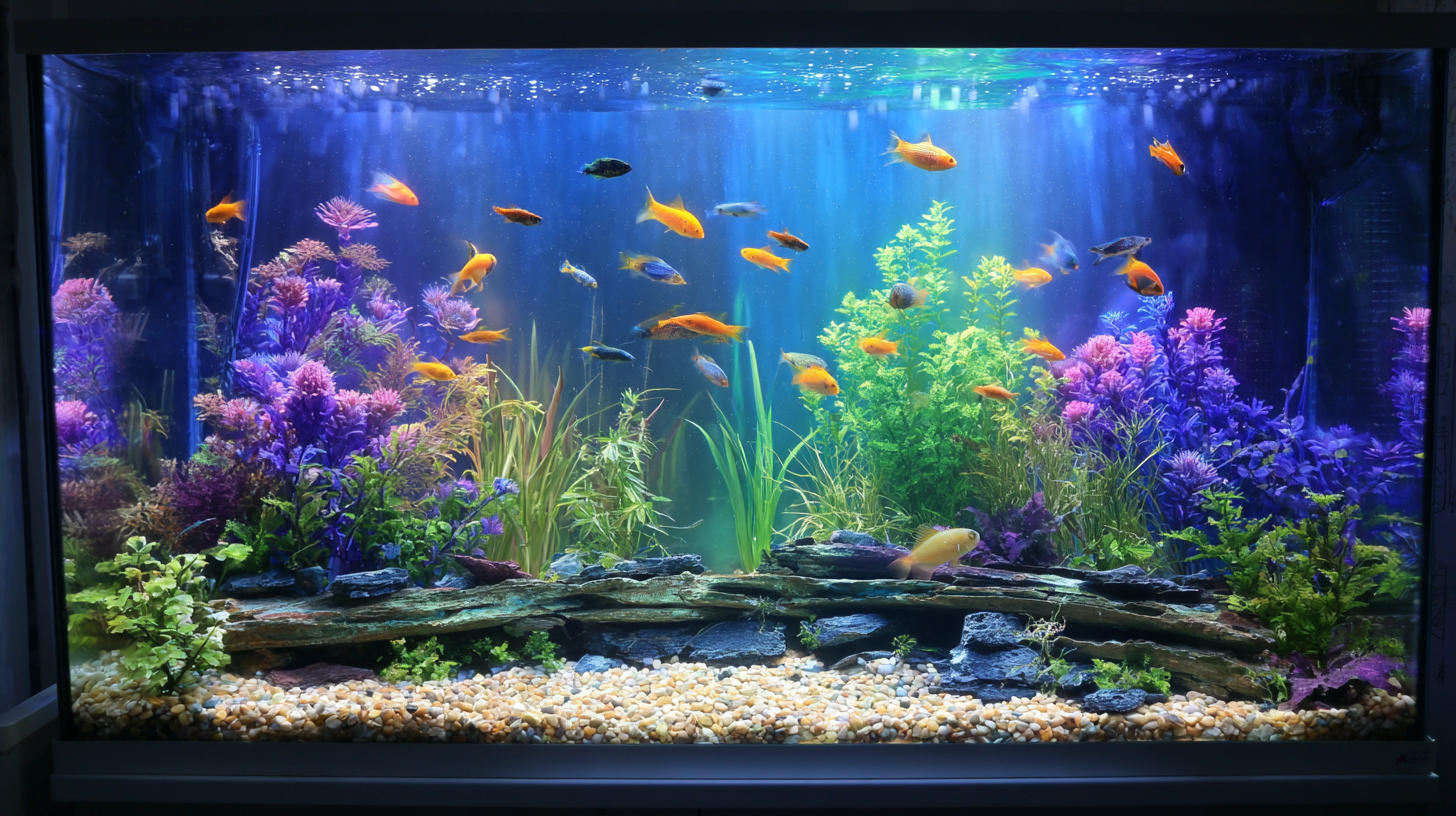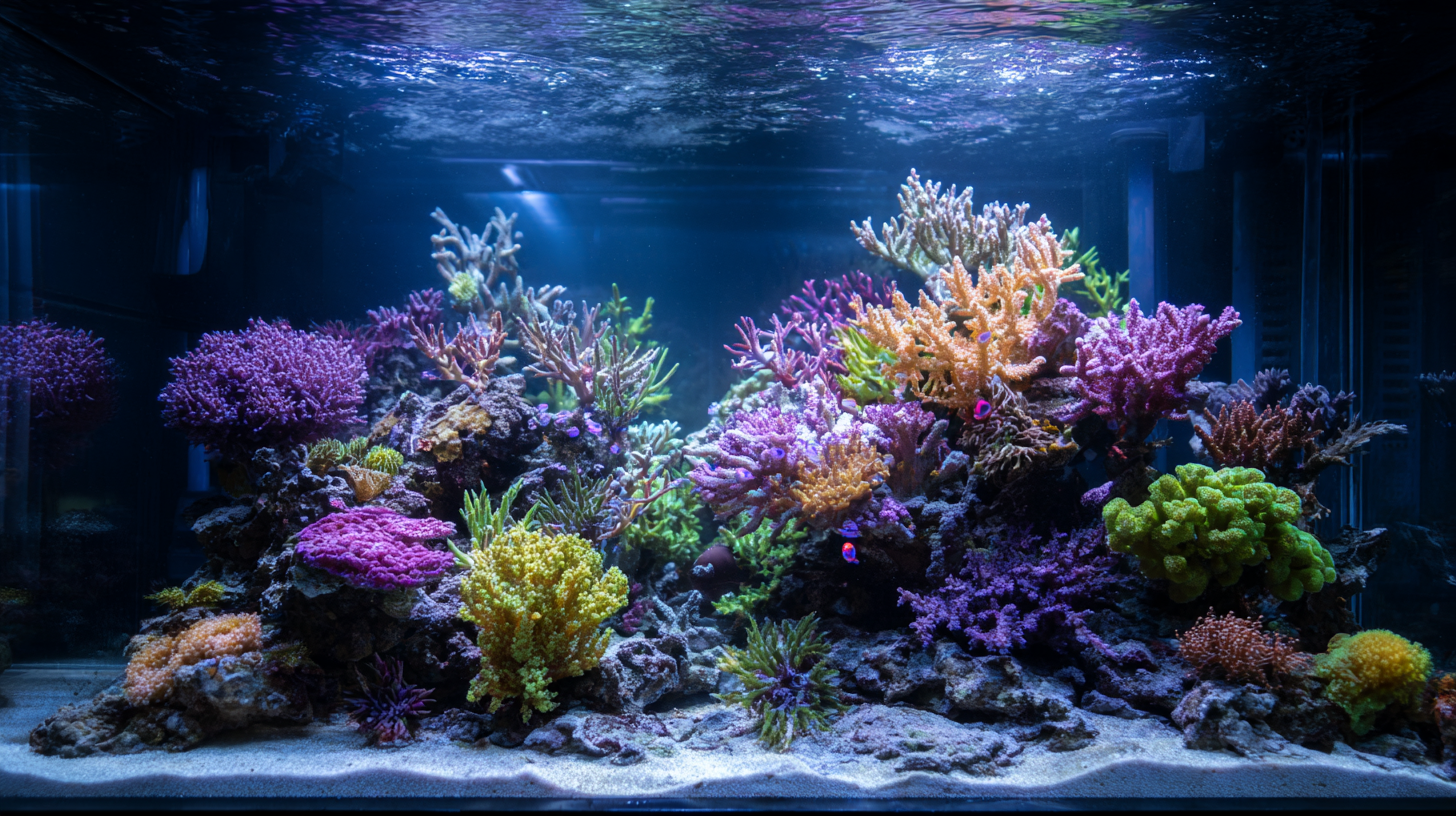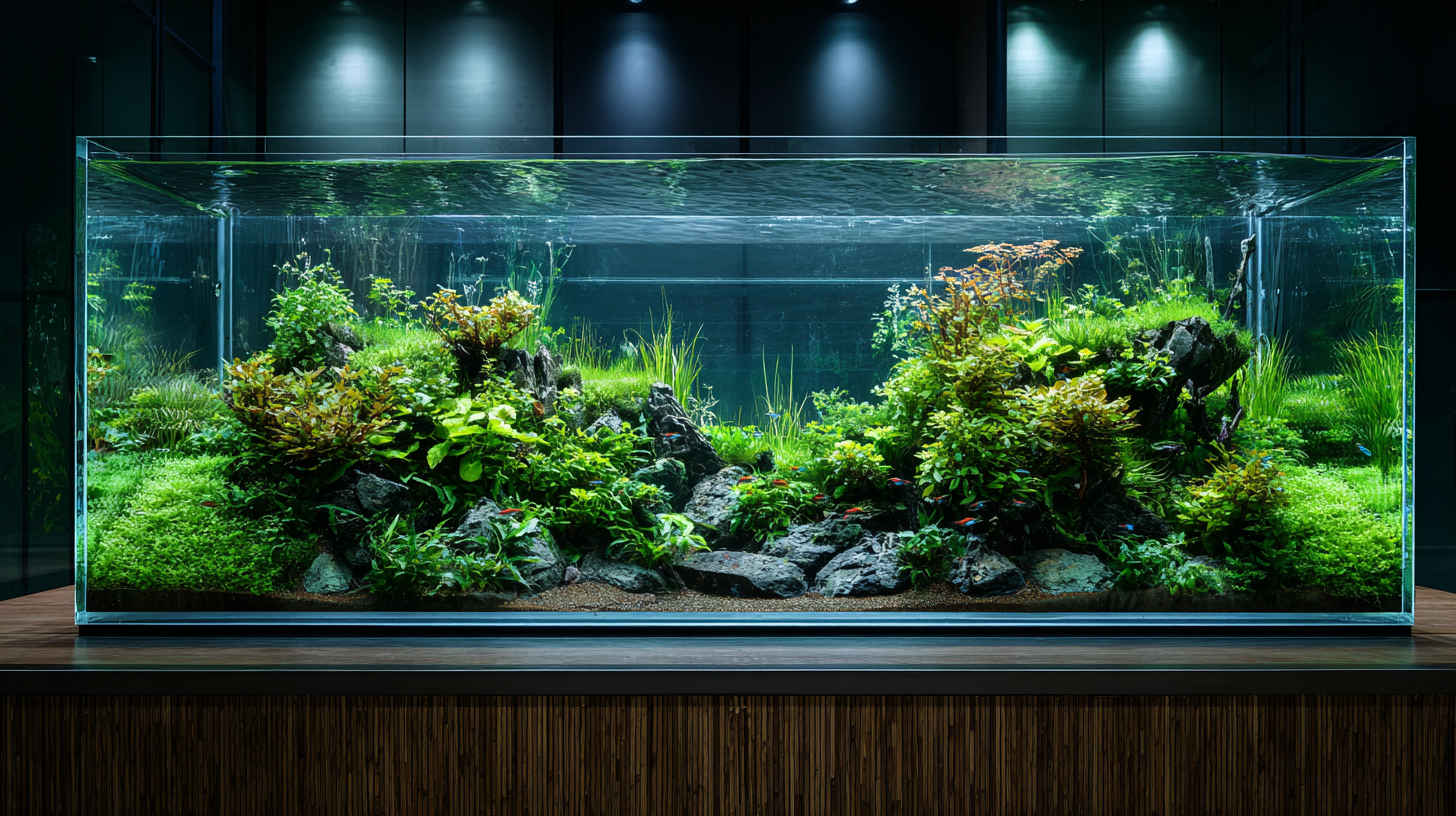The Future of Home Aquariums in Sustainable Aquaculture
The rise of sustainable aquaculture is reshaping the future of home aquariums, presenting both challenges and opportunities for enthusiasts and environmental advocates alike. According to the World Bank, the global demand for seafood is expected to reach 200 million tons by 2030, leading to increased pressure on natural fish populations and ecosystems. This shift is prompting aquarium hobbyists to reconsider traditional practices in favor of sustainable alternatives, such as closed-loop systems and aquaponics.
 Moreover, the National Oceanic and Atmospheric Administration reports that nearly 90% of global fish stocks are either fully exploited or overfished, underscoring the urgent need for responsible sourcing in the aquarium trade. As home aquarium enthusiasts embrace innovative, eco-friendly technologies, the integration of sustainable practices into this beloved hobby could pave the way for a new era of responsible aquaculture, fostering a deeper connection between individuals and aquatic ecosystems.
Moreover, the National Oceanic and Atmospheric Administration reports that nearly 90% of global fish stocks are either fully exploited or overfished, underscoring the urgent need for responsible sourcing in the aquarium trade. As home aquarium enthusiasts embrace innovative, eco-friendly technologies, the integration of sustainable practices into this beloved hobby could pave the way for a new era of responsible aquaculture, fostering a deeper connection between individuals and aquatic ecosystems.
Innovative Technologies Transforming Home Aquariums for Sustainability
Innovative technologies are transforming home aquariums, making them not only visually appealing but also sustainable. The Smart Fish Tanks Market is projected to grow from USD 1.2 billion in 2024 to USD 2.5 billion by 2033, showcasing a significant trend towards smart and sustainable aquarium setups. With the integration of IoT devices, aquarists can monitor water quality, temperature, and fish health in real-time, reducing the risk of environmental degradation and promoting responsible fishkeeping.

As the demand for high-quality seafood rises due to climate change and resource limitations, home aquariums can play a role in sustainable aquaculture. By utilizing innovative filtration technologies, hobbyists can maintain optimal conditions for both fish and plants, creating closed-loop systems that minimize waste and use fewer resources.
Tips for enhancing the sustainability of your home aquarium include:
- First, consider aquaponics systems that combine fish and plant cultivation, allowing for natural waste filtration.
- Second, invest in energy-efficient lighting and filtration systems to reduce electricity consumption.
- Lastly, source fish and plants from sustainable suppliers to support responsible aquaculture practices and help preserve natural ecosystems.
Integrating Aquaponics with Home Aquariums: A Step-by-Step Guide
Integrating aquaponics with home aquariums represents a significant leap toward sustainable aquaculture. According to a report by the Food and Agriculture Organization (FAO), aquaponics systems can yield up to 20 times more food per square foot than traditional farming methods. This combination of fish farming and hydroponics not only conserves water—by using approximately 90% less than conventional soil gardening—but also creates a closed-loop ecosystem where fish waste serves as organic fertilizer for plants.
To embark on this innovative journey, one can start by setting up a small aquarium stocked with fish such as tilapia or goldfish, which thrive in a variety of conditions. Following this, a hydroponic system should be integrated, utilizing nutrient-rich water from the aquarium to nourish plants like lettuce or herbs. An industry report from The National Aquaculture Association indicates that the rising popularity of home aquaponics systems is expected to grow by 7% annually, driven by increased consumer demand for locally sourced food and sustainable practices. This step-by-step guideline not only enhances the efficiency of food production at home but also fosters a more sustainable lifestyle.
The Future of Home Aquariums in Sustainable Aquaculture
This bar chart displays the efficiency of a typical home aquaponics system. It shows the production of fish and vegetables, as well as water and energy consumption. This data highlights the potential benefits of integrating aquaponics with home aquariums for sustainable aquaculture.
Choosing Sustainable Fish and Plants for Your Home Aquarium
As the interest in sustainable living grows, selecting the right fish and plants for your home aquarium becomes increasingly important. Choosing sustainable species not only contributes to environmental health but also enhances the vitality of your aquarium. When considering fish, look for those that are responsibly sourced or bred in captivity. Species such as bettas, guppies, and certain types of tetras have sustainable breeding programs that help reduce the strain on wild populations. These fish are not only vibrant and captivating but also help maintain balanced ecosystems within the aquarium.

Incorporating native aquatic plants fosters a natural environment while ensuring easier maintenance and growth. Species such as Java fern, Anubias, and Hornwort provide essential oxygenation and filtration for your tank, creating a healthier habitat for your fish. When sourcing these plants, prioritize nurseries that practice eco-friendly cultivation to avoid contributing to habitat destruction. By carefully selecting sustainable fish and plants, enthusiasts can create a thriving, eco-conscious aquarium that aligns with the principles of sustainable aquaculture, ultimately enjoying a beautiful aquatic display that's kind to our planet.
Eco-Friendly Practices for Maintaining a Healthy Home Aquarium
Maintaining a healthy home aquarium is increasingly intertwined with sustainable aquaculture practices. According to a report by the Aquatic Conservation Society, nearly 30% of fish species in aquariums are threatened in the wild due to overfishing and habitat destruction. By adopting eco-friendly practices, hobbyists can contribute to the preservation of aquatic biodiversity. Utilizing species that are bred in captivity reduces pressure on wild populations and ensures a more sustainable hobby. The Marine Conservation Society also emphasizes the importance of selecting local aquaculture products, which significantly cut down on carbon footprints associated with transportation.
In addition to choosing sustainably sourced fish, homeowners can implement practices that minimize waste and resource consumption. Regular testing of water quality, as suggested by the U.S. Environmental Protection Agency, can help maintain a balanced tank environment while reducing chemical usage. Implementing natural filtration systems, such as live plants, not only enhances the aesthetic of the aquarium but also creates a healthier ecosystem that requires fewer artificial additives. Such practices not only promote a vibrant aquatic habitat but also align home aquariums with the principles of sustainable aquaculture.
Designing Your Home Aquarium with Sustainable Materials and Resources
When designing your home aquarium, prioritizing sustainable materials and resources can significantly impact both aesthetics and the environment. Opting for natural decor such as driftwood and rocks sourced ethically adds a unique touch while ensuring the ecosystem is not harmed. For the aquarium itself, consider using glass rather than acrylic, as it is recyclable and often has a longer lifespan.
Incorporating energy-efficient equipment is another vital aspect of sustainability. LED lighting, for instance, consumes less power and lasts longer, reducing your overall energy footprint. Additionally, look for filtration systems that promote water conservation and minimize waste. Regular maintenance using eco-friendly products not only keeps your aquarium healthy but also protects local waterways from harmful chemicals.
Remember to choose fish and plants that are native to your region or sustainably farmed. This practice not only supports biodiversity but also enhances the aquarium’s ecosystem. Researching the origins of aquarium species can lead you to more sustainable choices, creating a thriving aquatic habitat right in your home while contributing to global conservation efforts.
Copyright © 2021 Payless Pet Products - All Rights Reserved.